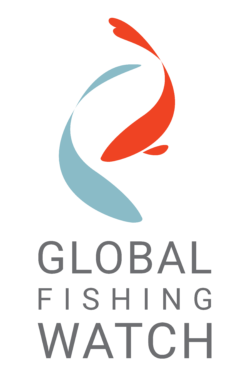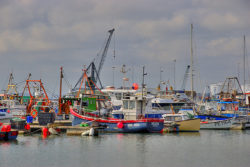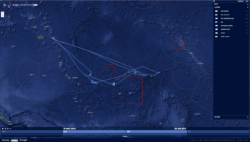Help fight illegal fishing with Global Fishing Watch
Posted on Categories Discover Magazine

By Adam Reyer, Project Director for Global Fishing Watch
Hundreds of millions of people depend on the ocean for their livelihoods, and almost 3 billion rely on it as a protein source. But countless threats — overfishing, destructive fishing practices, bycatch, dishonest catch reporting, habitat destruction — threaten our oceans and the people who depend on them. It’s an economic problem, too: illegal, unreported and unregulated fishing is a universal problem that accounts for 11-26 million tons of fish caught and $10-23 billion in global economic losses each year.
It seems overwhelming. But what if there was a tool that gave all people the power to become watchdogs of our oceans? How can technology help enforcement agencies to better monitor their territory at sea? How can we help identify illegal fishing and protect ocean habitats?

Credit: Peter Pearson (CC BY-SA 2.0)
These are all questions that Oceana, SkyTruth, and Google contemplated as part of their joint effort to create a new tool called Global Fishing Watch – just named one of the Top 10 Ocean Conservation Victories of 2016. Global Fishing Watch is an online platform that allows anyone with an internet connection to monitor when and where commercial fishing is happening around the globe. This new technology is the result of a powerful collaboration that takes advantage of the strengths unique to each partnering organization: Oceana’s ability to execute winning advocacy campaigns to protect the world’s oceans, SkyTruth’s ability to use satellites to monitor threats to the planet and Google’s ability to organize and make large and complex data sets universally accessible.
Launched in September of 2016, Global Fishing Watch provides the first free global view of the fishing activity of more than 35,000 commercial fishing vessels in near real-time. Previously, fishing on our oceans had been basically invisible, but now Global Fishing Watch provides an easy to use tool that offers transparency in commercial fishing activities to protect and restore our oceans by exposing illegal fishing practices.
Global Fishing Watch uses public broadcast data from the Automatic Identification System (AIS). Originally launched as a navigation tool to help prevent ship collisions, AIS information transmits from vessel transponders to satellite and terrestrial receivers around the world, providing a global feed of vessel locations.
Each day, AIS tracks more than 20 million data points; and Global Fishing Watch uses this information to track vessel movement and classify it as “fishing” or “non-fishing” activity. The Global Fishing Watch platform is regularly updated with these data to show vessel tracks and fishing activity from January 1, 2012 to three days prior to the present day.
Through Global Fishing Watch, anyone with an internet connection can track fishing vessels, help identify suspicious fishing behavior, and monitor commercial fishing activity worldwide. This puts pressure on seafood suppliers to uphold transparency and support legally caught seafood, helps enforcement agencies prioritize problem areas and vessels of concern, allows fishery managers to track vessels and detect potential unauthorized activity, and helps deter illegal fishing and decrease overfishing.
Users also can search for vessels by name, follow individual vessel tracks, monitor marine protected areas, and pinpoint which vessels have been at sea for extended periods, perhaps indicating suspicious reasons for avoiding port, such as offloading their catch onto other vessels. Governments can use Global Fishing Watch to confirm whether fishing vessels are authorized to fish in their waters, and pursue those that are not. Seafood retailers can see where and how their fish are being caught. Journalists and researchers can study the impact of fishing on ocean health. The possibilities of using Global Fishing Watch are endless.
“Our global fisheries are in dire need of help and we are excited to bring this enabling technology to people everywhere to allow them the opportunity to participate in ocean conservation in a way never before possible,” says Jacqueline Savitz, Oceana’s senior vice president for the United States and Global Fishing Watch. “Simply put, Global Fishing Watch has the potential to improve the lives of hundreds of millions of people around the world and we are proud to be a part of the team making that happen.”

Screen shot of Marshall Islands fishing vessel route with outlined protected areas in red. Credit: Global Fishing Watch
Enforcing fishing laws can be challenging and expensive, but Global Fishing Watch has already proven effective. The government of Kiribati used the data to show that a Marshall Islands fishing ship was fishing illegally in the Phoenix Islands Protected Area, which was declared off-limits to commercial fishing on January 1, 2015. The result? The owners of the ship paid a $1 million fine to the government of Kiribati. The company also made a special “goodwill arrangement” with the government, agreeing to pay an additional $1 million in the form of a grant.
Global Fishing Watch can support ocean health so governments, the fishing industry and concerned citizens can work together to restore fish stocks and protect important ocean habitats. By taking an interest in monitoring commercial fishing activities, you, too can help to encourage transparency in seafood supply chains and combat illegal behavior on our oceans.
Want more citizen science? Check out SciStarter’s Project Finder! With 1100+ citizen science projects spanning every field of research, task and age group, there’s something for everyone!